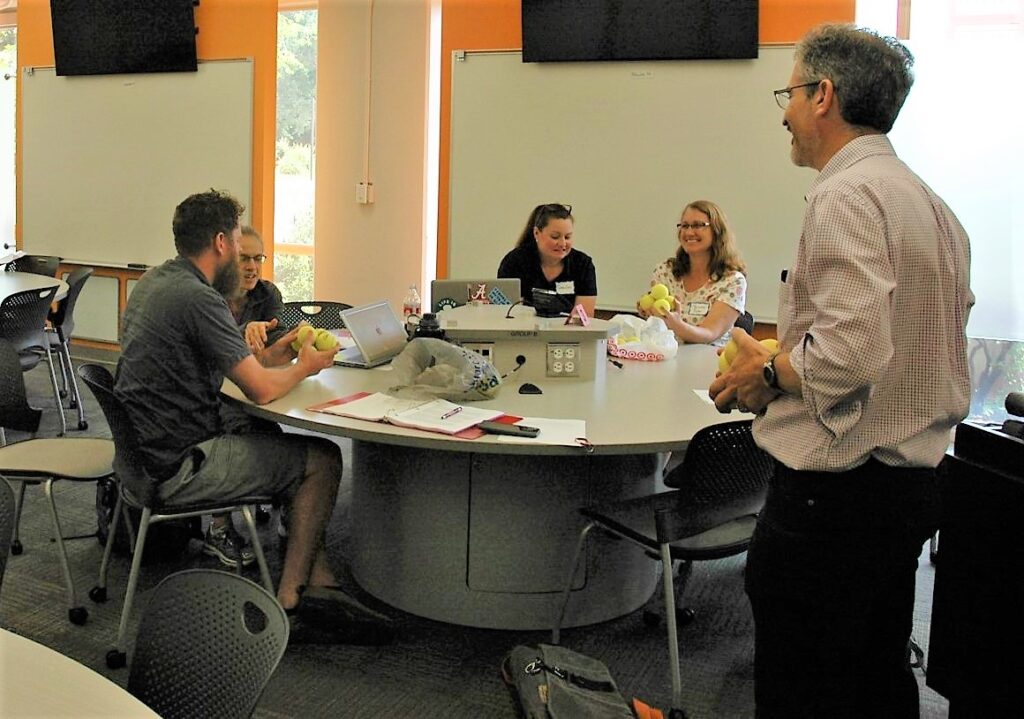Research
CURRENT RESEARCH PROJECTS & DISCOVERIES
1. Transition Zone Theory of Crystallization
Having demonstrated that our transition zone theory (TZT), the condensed matter analog of Eyring’s transition state theory, accurately describes the temperature dependent crystal growth rate from melts, viscous relaxation and the glass transition, we are now pursuing novel investigations to determine if/how the TZT principles of the temperature dependent configural entropy and cooperativity can be applied to the processes of crystal nucleation from melts and crystal growth from saturated solutions.
-
Transition Zone Theory of crystal nucleation (TZTnuc)
Classical nucleation theory developed to describe vapor condensation does not effectively describe crystal nucleation from melts. By contrast, our TZT-cooperative-ensemble-based understanding of condensed matter processes to date effectively describes the nucleation induction time and explains the glass-like history dependence of crystal nucleation observed in three experimental systems (inorganic network, salt-hydrate, and aromatic molecule).
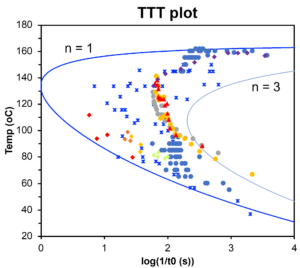
-
Transition Zone Theory of solution crystallization (TZTsc)
Measurement of crystal growth rates as a function of temperature and concentration along with understanding of the solute:solvent phase diagram are being used to develop TZTsc. Activation parameters, uniquely accessible using TZTsc, demonstrate solution crystallization appears to proceed by a cooperative, associative reaction mechanism.
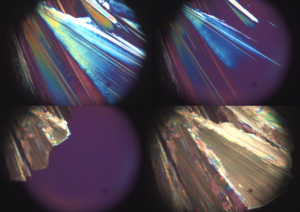
2. Liquid and Solution Structure
Despite liquids making up much of the earth (a liquid metallic core, vast oceans, the human body is 50-60% water) an atomic/molecular level understanding of liquid structure is notably incomplete. Simple calculations based on the comparative density of a liquid and its corresponding solid demonstrate that average interatomic distances do not significantly change between liquid and crystalline states (< 5%). Given that bonds do not break between materials liquid and crystalline states we are able to utilize principles of network bonding and intermolecular forces in crystals to begin to understand patterns of organization in both pure liquids and solutions. Neutron and X-ray diffraction investigations reveal structural details, NMR investigations provide insight into chemical environments, and calorimetric investigations reveal the energy necessary to transition between liquid and crystalline states.
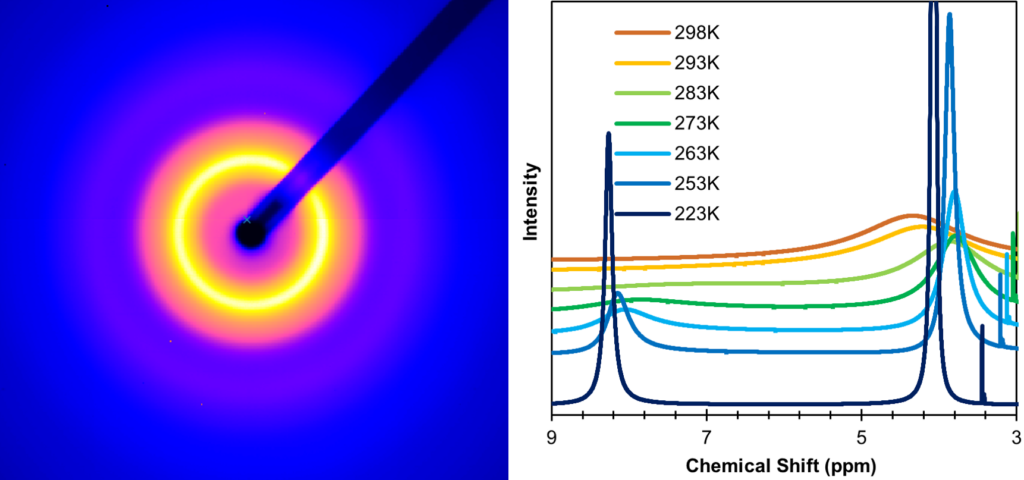
3. Diffraction Techniques to Reveal Structure in amorphous and discorded condensed matter
-
-
Differential-(variable temperature/concentration)-PDF Analysis (d-(VT/C)-PDF)
To complement our TZTsc mechanistic analysis of solution crystal growth, it is necessary to understand solution and melt structures out of which crystals grow. To accomplish this, we are developing (d-(VT/C)-PDF) techniques, using temperature and concentration as additional data dimensions to enhance structural information that can be extracted from synchrotron and neutron diffraction data.
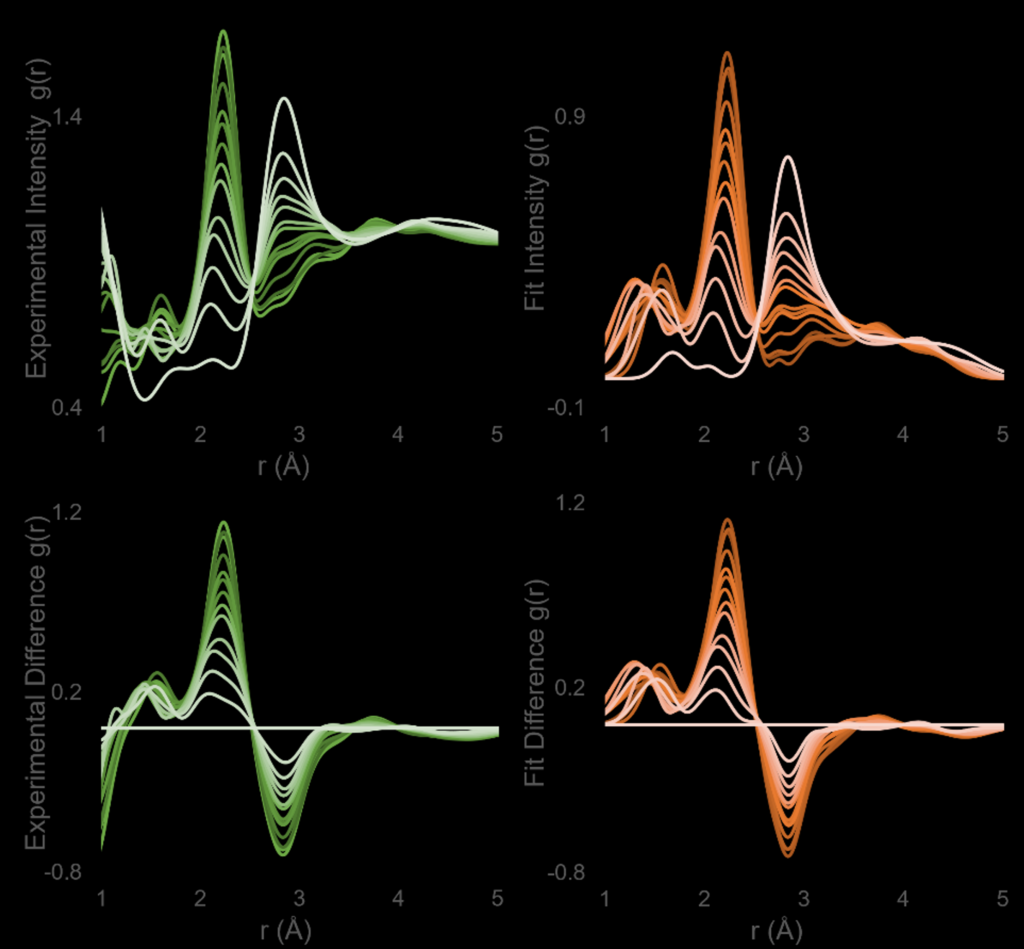
-
Direct methods analysis of diffuse scattering to characterize disordered structure
I lead an international team (NCSU, ORNL, APS, FAU (Germany) and U. Bremen (Germany)) to use 3D-D-PDF analysis to identify the structural origins of diffuse scattering in disordered crystals (e.g. plastic crystals, relaxer ferroelectrics and ionic conductors).
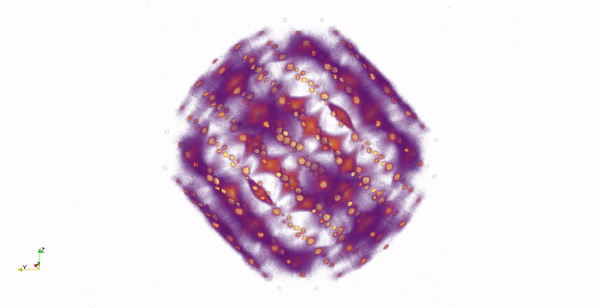
-
Cellulose encapsulated mineral supplements
Discovered novel methods to encapsulate micronutrient minerals in cellulose, providing a platform to target nutrient delivery throughout the digestive tract. Currently working toward commercialization.
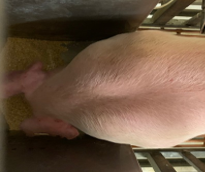
-
SUMMARY OF MAJOR RESEARCH ACCOMPLISHMENTS
1. Developed novel principles of crystal engineering…
…demonstrating structural analogies between metal halides and metal oxides, to create reactive metal halide frameworks.
-
-
- Halo-Zeotypes: A New Generation of Zeolite-type Materials. Chem., 1997, 36, 2072-75.
- [(H2NEt2)2][CuCl4]}[AlCl4]: Hydrogen-Bonded Framework Construction of the First Anti-Zeotype. Chem., 1998, 37, 3318-3320. (Cover feature)
- Metal Halide Analogs of Oxides: A Building Block Approach to the Rational Synthesis of Solid State Materials. M ater., 1998, 10, 2699-2713. (Review)
- Sorptive Reconstruction of the CuAlCl4 Framework upon Reversible Ethylene Binding, Am. Chem. Soc., 2003, 125, 11065-11079.

-
2. Amorphous Materials Engineering
Extended principles of crystal engineering to engineer structure in liquid and amorphous materials, including discovery of the most metal-rich liquid crystals reported to date.
-
-
- Designing Intermediate Range Order in Amorphous Materials. , 2002, 419, 381-384.
- Metallotropic Liquid Crystals: Surfactant Induced Order in Molten Metal Halides. Nature Materials, 2006, 5, 271-275 (Cover Feature).
- Crystalline and Liquid Structure of Zinc Chloride Tri-hydrate: A unique ionic liquid. Chem., 2015, 54, 1109-1119.
- The Ionic Liquid Character of Zinc Chloride Hydrates Define Solvent Characteristics that Afford Solubility of Cellulose. Phys. Chem. B, 2016, 120, 1134-1141.
- Understanding the water-in-salt to salt-in-water characteristics across the zinc chloride:water phase diagram. Phys. Chem. B, 2022, 126, 2265-2278. DOI: 10.1021/acs.jpcb.1c10530 (Cover Feature)
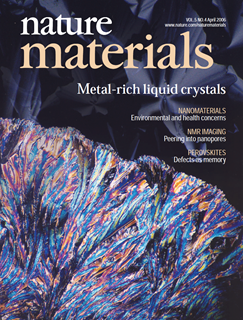
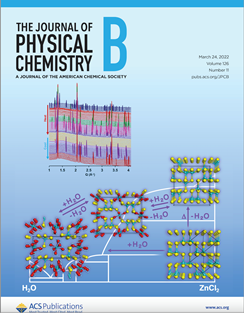
-
3. Rate Expression for Condensed Matter Reactions
Developed the theory, and experimentally demonstrated corrections to classic kinetic models, to provide the first intrinsic, material-specific rate expression for condensed matter reactions. This work included development of novel time-resolved synchrotron diffraction techniques and the fastest reported time-resolved in-situ neutron diffraction measurements.
- Simulating Crystallization to Elucidate the Parameter Space in the KJMA Condensed Phase Transformation Model. Mater., 2013, 25, 3941-3951.
- Experimental Determination of the Crystallization Phase Boundary Velocity in the Halozeotype CZX-1. Mater., 2013, 25, 3932-3940.
- From Rate Measurements to Mechanistic Data for Condensed Matter Reactions: A Case Study using the Crystallization of [Zn(OH2)6][ZnCl4]. Crystals 2017, 7, 11 (1-16).
- “Particle Size is a Primary Determinant for Sigmoidal Kinetics of Nanoparticle Formation: A “disproof” of the Finke-Watzky (F-W) nanoparticle nucleation and growth mechanism.” Mater., 2020, 32, 3651-3656
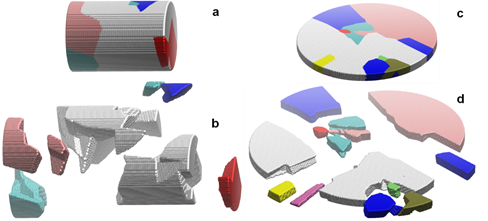
4. Transition Zone Theory
Developed and experimentally demonstrated an original Transition Zone Theory (TZT) for crystallization and viscous relaxation. Our theory is the condensed matter analog of Eyring’s transition state theory. Transition Zone Theory allows, for the first time, determination of the enthalpy and entropy of activation for condensed phase reactions.
- Transition Zone Theory of Crystal Growth and Viscosity. Mater., 2015, 27, 3526-3532.
- Isotope Effects Reveal the Template Influence on the Intrinsic Crystal Growth of a Metal Halide Network. Phys. Chem. C., 2019, 123, 7475-7485.
- Transition Zone Theory Compared to Standard Models: Reexamining the Theory of Crystal Growth from Melts, J. Phys. Chem. C, 2020, 124, 18724-18740. (Cover Feature)
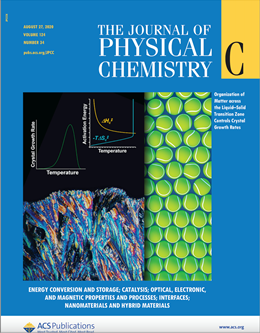
5. Discovered the origin of the glass transition…
…said to be “the deepest unsolved problem in solid-state theory.” (Anderson, 1995)
- Transition Zone Theory of the Glass Transition. Journal of Non-Crystalline Solids, 2018, 491, 24-33.
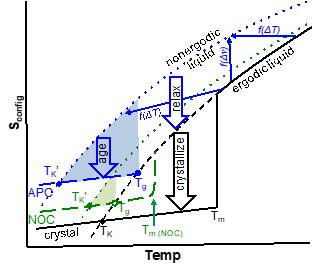
6. Pioneered methods to visualize 3-D diffuse scattering…
…and determine their corresponding 3-D real-space pair distribution functions to understand disordered materials.
- Software written and incorporated into the MANTID software suite at Oak Ridge National Lab,
- Coupled Orientational and Displacive Degrees of Freedom in the High Temperature Plastic Phase of Carbon Tetrabromide, a-CBr4. Rev. B., 2008, 77, 144205:1-10.
- K-space Algorithmic REconstructioN (KAREN): A robust statistical methodology to separate Bragg and diffuse scattering. Appl. Cryst., 2020, 53, 159-169.

7. Teaching Chemistry with Critical Thinking Approaches
- Beyond the Textbook: A First Year Introduction to Research at a Research I University. Chem. Ed., 1998, 75, 325-327.
- From the Wood-Shop to Crystal Engineering: Teaching Three-Dimensional Chemistry. Chem. Ed., 2001, 1195-1197.
- A Nonlinear “Sticky” Web of Study for Chemistry: a graphical curricular tool for teaching and learning chemistry built upon the interconnection of core chemical principles. Chem. Ed.,2018, 95, 2134, DOI: 10.1021/acs.jchemed.7b00878.
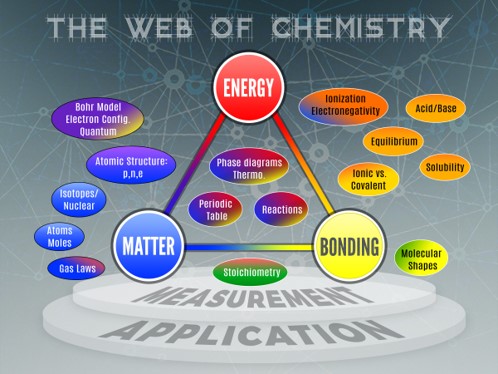
8. Chemistry Professional Development program for high school chemistry teachers
- ChemPD-I: Building Foundations, Teaching/Learning through Discovery, uses discovery-based learning to teach fundamental chemistry concepts. Specific chemistry instruction is bracketed by discussion of teaching strategies for critical thinking, scaffolded learning, and assessment of learning.
- ChemPD-II: From Concepts and Content to Critical Thinking and Problem Solving, helps teachers develop their own assignments and projects that apply and integrate learned content to real-world problem solving.
